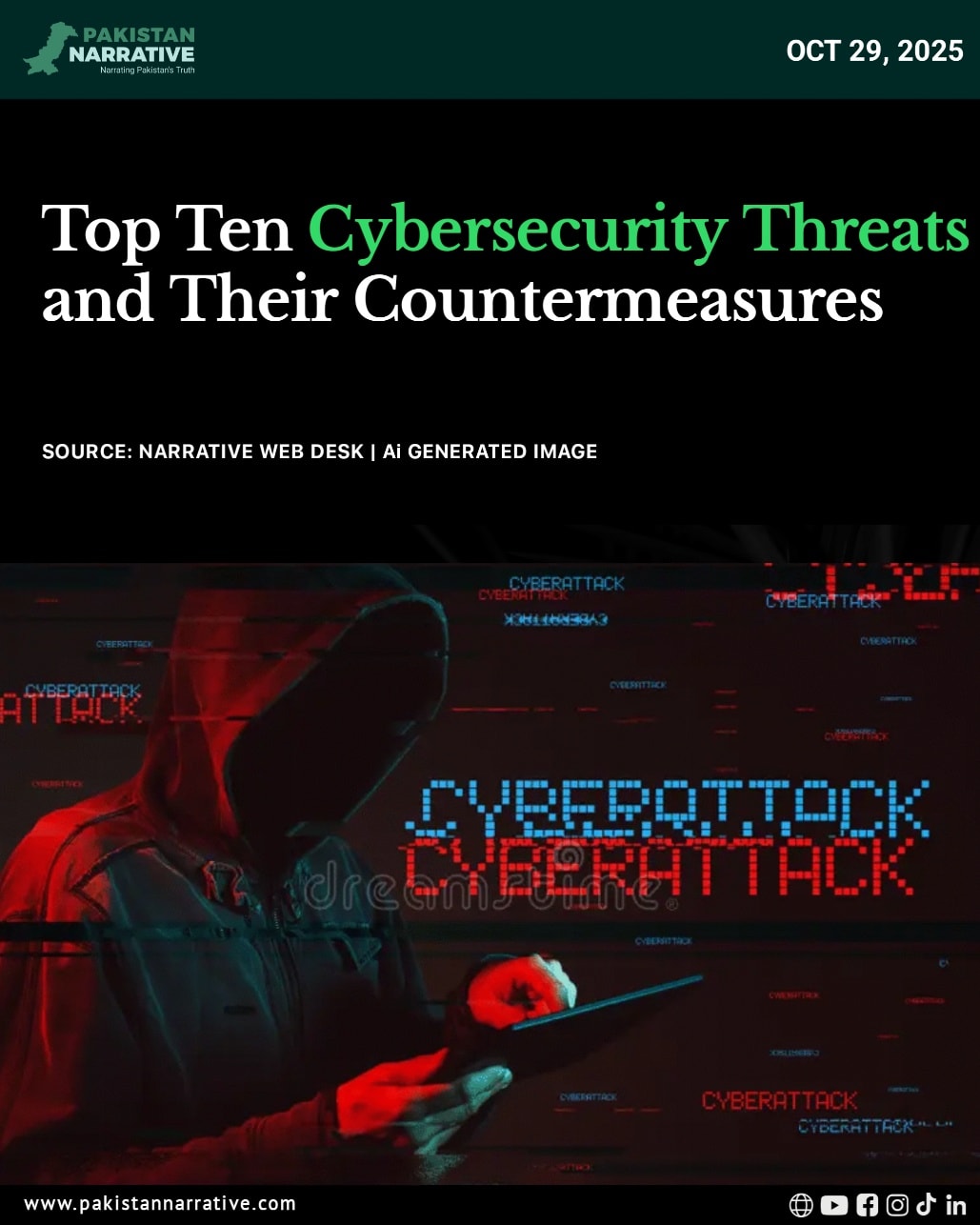In today’s hyperconnected world, cybersecurity is no longer just an IT concern — it’s a business imperative. From data breaches and ransomware to social engineering and AI-powered attacks, digital threats are evolving faster than ever. Organizations that fail to adapt risk losing not only data but also reputation, revenue, and customer trust.
This article highlights the top ten cybersecurity threats currently facing individuals and enterprises, along with practical countermeasures to help mitigate these risks.
1. Phishing and Social Engineering Attacks
The Threat:
Phishing remains the most common and successful cyberattack technique. Attackers impersonate trusted entities through email, text messages, or phone calls to trick users into revealing credentials or clicking malicious links.
Countermeasures:
- Conduct regular phishing awareness and simulation training.
- Use email filtering and link scanning tools.
- Implement multi-factor authentication (MFA) to reduce credential compromise.
- Verify suspicious communications before responding or clicking links.
2. Ransomware
The Threat:
Ransomware encrypts files and demands payment for their release. These attacks can cripple critical infrastructure, healthcare systems, and enterprises.
Countermeasures:
- Maintain offline and encrypted backups of essential data.
- Keep operating systems and security software up to date.
- Restrict user privileges to prevent malware from spreading laterally.
- Use endpoint detection and response (EDR) tools for early threat detection.
3. Cloud Security Breaches
The Threat:
With widespread cloud adoption, misconfigured storage, weak access controls, and poor data governance are leading causes of cloud breaches.
Countermeasures:
- Apply the shared responsibility model—know what security aspects your provider handles.
- Encrypt sensitive data before uploading it to the cloud.
- Use identity and access management (IAM) solutions with strong role-based controls.
- Regularly audit cloud configurations for compliance and security gaps.
4. Insider Threats
The Threat:
Insiders—whether malicious employees or careless users—pose serious security risks. They already have authorized access to systems and data.
Countermeasures:
- Implement the principle of least privilege (PoLP).
- Use user behavior analytics (UBA) to detect anomalies.
- Conduct exit audits for departing employees.
- Build a culture of cybersecurity accountability and awareness.
5. Internet of Things (IoT) Vulnerabilities
The Threat:
IoT devices, from smart cameras to industrial sensors, often lack proper security. Attackers exploit these weak points to infiltrate networks.
Countermeasures:
- Change default passwords immediately after installation.
- Keep firmware and software updated.
- Segment IoT devices on separate networks.
- Disable unnecessary features and remote access.
6. Supply Chain Attacks
The Threat:
Attackers target third-party vendors or software updates to gain indirect access to organizations, as seen in the SolarWinds breach.
Countermeasures:
- Vet third-party vendors for cybersecurity compliance.
- Implement zero-trust architecture for all supply chain connections.
- Monitor software updates and code integrity.
- Establish incident response protocols for vendor-related breaches.
7. Zero-Day Exploits
The Threat:
Zero-day vulnerabilities are flaws unknown to software vendors and exploited before patches are released. They are difficult to detect and defend against.
Countermeasures:
- Enable automated patch management for all systems.
- Deploy intrusion detection/prevention systems (IDS/IPS).
- Use threat intelligence feeds to identify emerging exploits.
- Implement strong network segmentation to limit impact.
8. Data Breaches and Identity Theft
The Threat:
Cybercriminals target personal and financial data for resale or fraud. Breaches often result from poor password hygiene, unencrypted data, or weak access control.
Countermeasures:
- Enforce strong password policies and MFA.
- Encrypt sensitive data in transit and at rest.
- Conduct regular vulnerability and penetration testing.
- Monitor for data leaks on the dark web.
9. Artificial Intelligence (AI)-Driven Attacks
The Threat:
Attackers now use AI to automate phishing, craft deepfakes, and bypass security filters. These sophisticated attacks can deceive even experienced professionals.
Countermeasures:
- Deploy AI-powered defense systems to detect patterns of malicious activity.
- Validate digital content and verify sources of media files.
- Train employees to recognize deepfake videos and manipulated content.
- Develop organizational AI ethics and security policies.
10. Distributed Denial of Service (DDoS) Attacks
The Threat:
DDoS attacks overwhelm servers or networks with massive traffic, causing downtime and loss of service. Attackers may demand ransom or use the attack as a distraction for other intrusions.
Countermeasures:
- Use DDoS protection and mitigation services from ISPs or cloud providers.
- Employ content delivery networks (CDNs) to distribute traffic load.
- Implement rate limiting and network firewalls.
- Prepare a DDoS response plan and test it regularly.
Conclusion
Cyber threats are evolving faster than ever, leveraging automation, AI, and human error to compromise digital environments. The key to resilience lies not only in advanced tools but also in proactive defense strategies, user awareness, and a zero-trust mindset.
In cybersecurity, prevention will always be more effective—and less costly—than recovery.
About Author:
Qasim Minhas is an IT expert and cybersecurity professional with extensive experience in IT infrastructure, emerging technologies, digital security and the news media domain. He is dedicated to promote cybersecurity awareness and helping organizations strengthen their digital resilience in an ever-evolving threat landscape.





